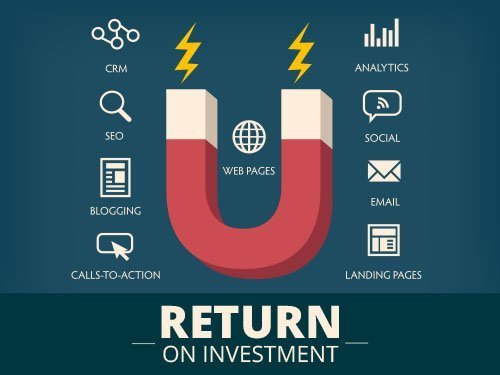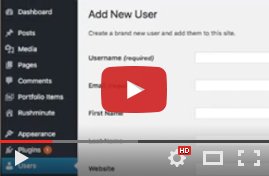So here’s the deal: figuring out the return on investment (ROI) of your website or digital marketing is simple. The only hitch for small businesses is it costs about $5K a month. That’ll give you access to a robust marketing automation platform (HubSpot, Salesforce, Marketo, etc.) and a decent budget to generate content and manage your lead funnel.
But for most small business owners that’s just not realistic. Especially when you consider the first year is when you set up the system and the second year is when you finally get to analyze and tweak the results.
So what can a small business owner do to prove – or at least give some level of assurance of – website and digital marketing ROI?
Here are the easy steps you can take to not only indicate ROI, but lay an important knowledge base for when you are ready to migrate to a robust marketing automation platform:
Know Your Baselines
First off, you’ve got to get some data on your website. Because without some sort of baseline of performance, you’re just winging it.

The easiest and cheapest way to do that is to set up Google Analytics for your website. It’s free and all you have to do is add a few lines of code to your website. Once you do that, you’ll have access to all sorts of valuable statistics like:
- number of visitors
- length of visit
- number of pages/visit
- most popular pages
- etc.
With Google Analytics, you’ll be able to slice and dice your statistics, compare month-to-month or year-to-year trends and identify content that’s getting the most traction with your audience. There’s so much information that it’s easy to get lost, so check out this blog post for a Quick Start Guide to Google Analytics for Small Business.
And if you have social media for your business, you can look at those metrics as well.

For instance, if your company has a Twitter account, you can go to your account by clicking on your profile picture, then select “Analytics”. There you’ll find valuable insights to help you gauge the ROI of your social media activities.
Check out the statistics as often as you like, but at a minimum take a peek every quarter and see if you can take away one insight. Consider it practice for when you’ll be in charge of a more complex marketing automation system.
Ask Your Clients
Probably the simplest way to find out the value of your digital marketing is to simply ask your clients. A really easy way to do this for service businesses is to weave a couple of questions into the conversation during a kickoff meeting. For instance, just as the meeting’s wrapping up, casually say, “you know, I’ve been meaning to ask you, how did you find out about us?” After they give their answer, you can nurse a bit more specific information from them by asking, “so do you remember doing a Google search or reading our reviews? I’m just wondering how it is folks like you find out about us. Was it someone you knew who pointed you our way or maybe some of our blog posts?”
And you might want to consider collecting this intel in a Google Sheet, especially if you have a small sales or marketing team.
Learn SEO
SEO (Search Engine Optimization) is an industry term for using words on your web pages that Google and Bing will use to help your site rank higher in the search results. The goal is to use the exact words people type into Google or Bing to find your products or services.
Now SEO isn’t necessarily going to prove ROI, it’s just that developing good SEO practices is vital to your business being found on the web. And since that’s what we’re trying to measure, you don’t want to assume your website isn’t working for you when your site’s performance was hindered by simply forgetting to use accurate keywords.
Build a Lead Generation System
Setting up a system to funnel leads to your sales team – a lead generation system – is how enterprises prove digital marketing ROI. This involves defining personas (common customer types) and all the different types of content (blog posts, white papers, social media posts, emails) needed to nurture a prospect along their “buyer journey” – from knowing nothing about your company to ultimately becoming a new client.
But what small business need is a simplified way to do create their own lead gen system.
The bad news is it’s not simple.
The good news is once you build it, you’ll have done all the hard work required to set up a marketing automation system, but without spending $5K/mo!
There’s a lot to cover, so when you’re ready, download our How to Build Your Own Small Business Lead Gen System.
Start Tracking Campaigns
Once you have your Lead Generation System, you’re going to need a way to track conversions (clicks, downloads, etc.). This is how you’ll ultimately determine your ROI. As you might imagine, if you have HubSpot, Marketo or Salesforce, all this is integrated into their platforms.
For the DIY small business, there is again yet another free option from Google: The Campaign URL Builder. This tool integrates with your Google Analytics and allows you to track the performance of an email campaign, landing page or download success page. It’s the exact same functionality as the big boys use and equally as robust, it just takes a bit of manual work to set one up each time you have a unique campaign you want to track.
ID Web Visitors
Lastly, if you’ve got a bit of money in your pocket and the majority of your prospects work at enterprise-sized companies, you might consider installing a Visitor ID tracking service (GleanView, WhoIsVisiting, etc.). With prices ranging from free to around $70/mo., you can get contact information on who’s visiting your website. It will identify the company that they work at and automatically add them to a popular CRM (Customer Resource Management software like Zoho, Salesforce, HubSpot, etc.) so you can reach out to them via phone or email.
While this isn’t very useful if your prospects are smaller businesses or individuals, it’s a simpler version of the tracking that all the major marketing automation platforms use and a great concept to be familiar with before you upgrade to a marketing automation platform.
But until you have $5K burning a whole in your pocket every month, give any one of these things a try. The sooner you implement even one of these, the sooner you’ll be on the road to determining your website and digital marketing ROI.
Let Rushminute Help
There’s a lot that goes into creating and maintaining all of your digital properties. We know. We’ve helped dozens of clients in the U.S. strengthen their brands with website makeovers, social media management and digital marketing. If you’re in the process of updating your site or need a “go to web guy” to help you manage your digital properties, Rushminute can help. Contact Rushminute or schedule a virtual cup of coffee and we’ll talk about your vision and how a great website can help you achieve your business goals.
________________
ABOUT THE AUTHOR
Robbie Moore is the founder of Rushminute, a digital marketing agency in Lincoln, Nebraska. With 20+ years of experience in digital marketing, Robbie has worked with dozens of companies and organizations, large and small, around the globe. He also writes extensively about design, development, and business in general.





